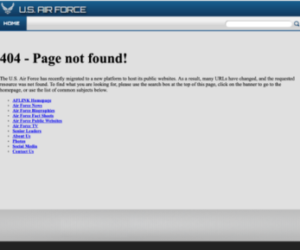On New Year’s eve December 31, 2019, the World Health Organization’s country office in China picked up a media statement by the Wuhan Municipal Health Commission from their website on cases of “viral pneumonia” in Wuhan city.
Now, on New Year’s eve 2021, the world is struggling with a tsunami of mutations of that original virus. The US is reporting at least 300,000 new infections daily and France is reporting more than 200,000 new cases daily. WHO reported 1,351,175 new cases worldwide in last 24 hours, 281,808,270 cumulative cases and 5,411,759 cumulative deaths.
WHO chief Tedros Adhanom warned: “I am highly concerned that Omicron (variant) being more transmissible, circulating at the same time as Delta (variant) – is leading to a tsunami of cases.
“This is and will continue to put immense pressure on exhausted health workers and health systems on the brink of collapse and again disrupting lives and livelihoods.”
The tsunami has already struck at the success of Joe Biden’s presidency, which hangs on a thread because of the devastating and speedy variants emerged from mutations of the original virus. Vaccines seem to be the most useful protections but their ability to defeat the virus is not conclusive because fully vaccinated persons are getting breakthrough infections
Another danger is the possibility that new variants could evade countermeasures and become fully resistant to current vaccines or past infection, necessitating vaccine adaptations. Any new vaccine update would potentially mean a new supply shortage.
The toll continues to rise in the US and around the world. “While there were 1.8 million recorded deaths (worldwide) in 2020, there were 3.5 million in 2021 and we know the actual number is much higher. This is not to mention to the millions of people dealing with long-term consequences from the virus,” Tedros said.
It’s been a long and frustrating struggle revealing the American and WHO scientific community’s inability to stalemate the virus. On New Year’s day 2020, WHO requested information on the reported cluster of atypical pneumonia cases in Wuhan from the Chinese authorities. On January 3, 2020, Chinese officials provided information to WHO on the cluster of cases of ‘viral pneumonia of unknown cause’.
On 10-12 January 2020, WHO published a comprehensive package of guidance documents for countries, covering topics related to the management of an outbreak of the new disease later denominated as severe acute respiratory syndrome coronavirus 2 (SARS-CoV-2) and defined as the causal agent of Coronavirus Disease 2019 (COVID-19). In March 2020, WHO declared a global COVID-19 pandemic.
Tedros and WHO have been offering solutions but their efficacy in halting or even slowing down SARS-COV-2 mutations is in doubt. Their main assertion is that ending health inequity around the globe remains the key to ending the pandemic. No one is safe anywhere until the majority of people everywhere have been fully vaccinated with two doses and have access to a third booster dose followed by more doses as necessary.
“I call on leaders of rich countries and manufacturers to learn the lessons of Alpha, Beta, Gamma, Delta and now Omicron and work together to reach the 70% vaccination coverage,” Tedros urged. “This is the time to rise above short-term nationalism and protect populations and economies against future variants by ending global vaccine inequity.”
“I want governments, industry and civil society to work with us on a campaign that targets 70% vaccine coverage in every country by the start of July. I also want to ensure COVID-19 care pathways with new treatments are available in every single country. And to ensure people get on treatment at the optimum time, we need to get tests everywhere.”
However, very high vaccination rates in many richer countries including 90% in Israel and 70%-80% in most West European countries, have not succeeding in slowing down the virus. In fact, they are the worst hit currently by the dangerous Delta and Omicron variants. Achieving WHO’s target of 70% coverage in every country will make COVID-19 impacts less lethal but there is little evidence so far that its variants will become more manageable or impacts on people’s working and social lives will be less disruptive.
















